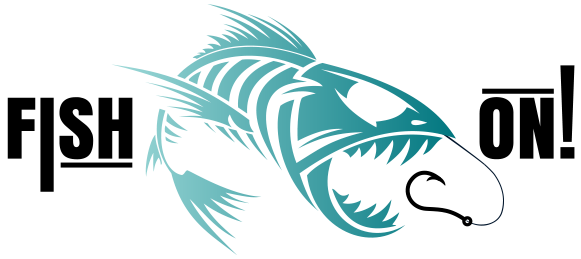Marathon Fishing Guide: The Ultimate Guide to Fishing in the Florida Keys
Share
Located in the heart of the Florida Keys, Our Marathon Fishing Guide is your key to the world-renowned fishing destination, offering anglers an incredible diversity of angling experiences. From the shallow patch reefs and famous bridges of the nearshore waters to the deep, blue canyons of the offshore realm, Marathon provides endless opportunities to hook a trophy catch. This comprehensive guide will equip you with the knowledge needed to navigate this unique fishery, covering nearshore and offshore tactics, bait selection, and the critical influence of tides and celestial cycles.
Marathon Fishing Guide - Nearshore Tactics: The Bridges and Patch Reefs
The waters surrounding Marathon are a nearshore angler's paradise. The area's defining features—the iconic Seven Mile Bridge and the scattered patch reefs—are magnets for a wide variety of fish. For detailed charts and GPS coordinates of prime nearshore spots, visit Marathon Fishing Spots Nearshore.
-
Fishing the Bridges: The Old Seven Mile Bridge, now a walking path, and the new bridge's pilings are a prime location for catching species like Tarpon, Mangrove Snapper, and Cobia. Tarpon, in particular, are legendary here during their spring and summer migration. The strong tidal currents that rip through the bridge channels create a perfect ambush point for these powerful fish.
-
Patch Reef Fishing: Just a few miles offshore on the Atlantic side, the patch reefs are vibrant ecosystems teeming with life. This is where you'll find an abundance of Yellowtail Snapper, Mutton Snapper, and various types of Grouper. The technique here is often a mix of light-tackle bottom fishing and chumming to draw fish out of the coral structure.
Best Baits for Nearshore Fishing:
-
Live Bait: Live pilchards, pinfish, and shrimp are the gold standard for attracting a wide range of nearshore species. For trophy Tarpon, a live crab or mullet is often the most effective choice.
-
Cut Bait: For targeting bottom dwellers like Mangrove Snapper and Grouper, a chunk of ballyhoo, mullet, or sardine on a jig or leader can be irresistible.
-
Artificials: Soft plastics and bucktail jigs are also highly effective, especially when worked along bridge pilings or over the reefs.
Offshore Tactics: Trolling and Deep Dropping
Marathon's proximity to the Gulf Stream makes it a launchpad for world-class offshore fishing. The deep waters are where you'll encounter large pelagic species and mysterious deep-water fish.
-
Trolling: This is the primary method for targeting migratory pelagic species like Dolphin (Mahi-Mahi), Wahoo, Tuna, and Sailfish. Offshore trolling involves dragging a spread of baits or lures behind the boat at a consistent speed. Look for tell-tale signs of life like Sargassum weed lines, floating debris, and especially diving birds, as these often indicate the presence of baitfish and, consequently, predators. Trolling with ballyhoo is a Keys staple, but artificial lures in bright colors can also be deadly effective.
-
Deep Dropping: This specialized technique is for targeting the deep-water species that live on the ledges and humps in 400 to 1,500+ feet of water. Using electric reels and heavy lead weights, anglers can drop multiple-hook rigs to the ocean floor. For GPS coordinates and specific numbers for these spots, you can find a comprehensive guide to Marathon Offshore Fishing Spots. The species you'll encounter are highly prized for their taste and include Snowy Grouper, Golden Tilefish, Queen Snapper, and Barrelfish. This method is less about a frantic fight and more about the rewarding pull of a heavy, deep-dwelling fish. The rigs typically feature multiple circle hooks baited with squid or cut fish.
The Science of the Bite: Tides, Moon Phases, and Feeding Times
Understanding the forces that influence fish behavior is paramount for a successful day on the water in Marathon.
-
Tides and Currents: The Florida Keys are defined by powerful tidal currents, which act as a conveyor belt for bait and nutrients. A strong tidal flow, whether incoming (rising) or outgoing (falling), is almost always better for fishing than a slack tide.
-
Incoming Tide: As the tide rises, it pushes clear, nutrient-rich water from the Atlantic over the reefs and into the channels, stirring up bait and triggering a feeding frenzy.
-
Outgoing Tide: A falling tide flushes bait from the flats and mangroves, concentrating them in channels and cuts, making it a prime time for ambush predators.
-
-
Major and Minor Feeding Times: Derived from the Solunar Theory, these are specific periods throughout the day when fish are most likely to be active.
-
Major Times: These are the most intense feeding windows and occur when the moon is directly overhead or directly underfoot (on the opposite side of the Earth). These periods correspond with the peak gravitational pull, which can cause significant water movement and increase fish activity.
-
Minor Times: These are shorter, less intense periods of activity that coincide with the moon's rise and set.
-
By consulting a solunar calendar and tide charts before your trip, you can strategically plan to be on the water during these key windows, maximizing your chances of a great catch. Whether you're targeting the acrobatic Tarpon of the Seven Mile Bridge or deep dropping for an exotic Grouper in the dark abyss, Marathon offers a fishing experience unlike any other.

